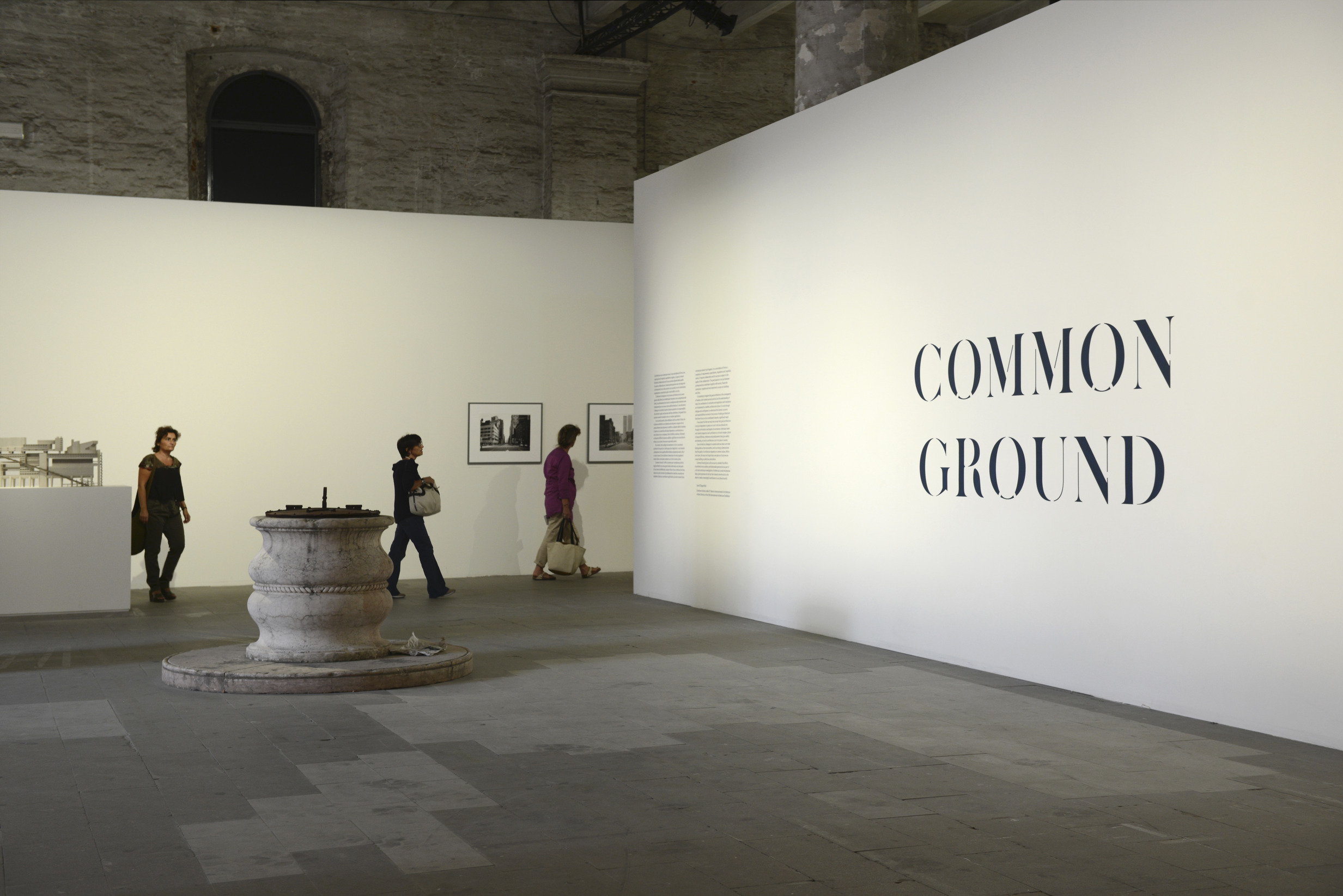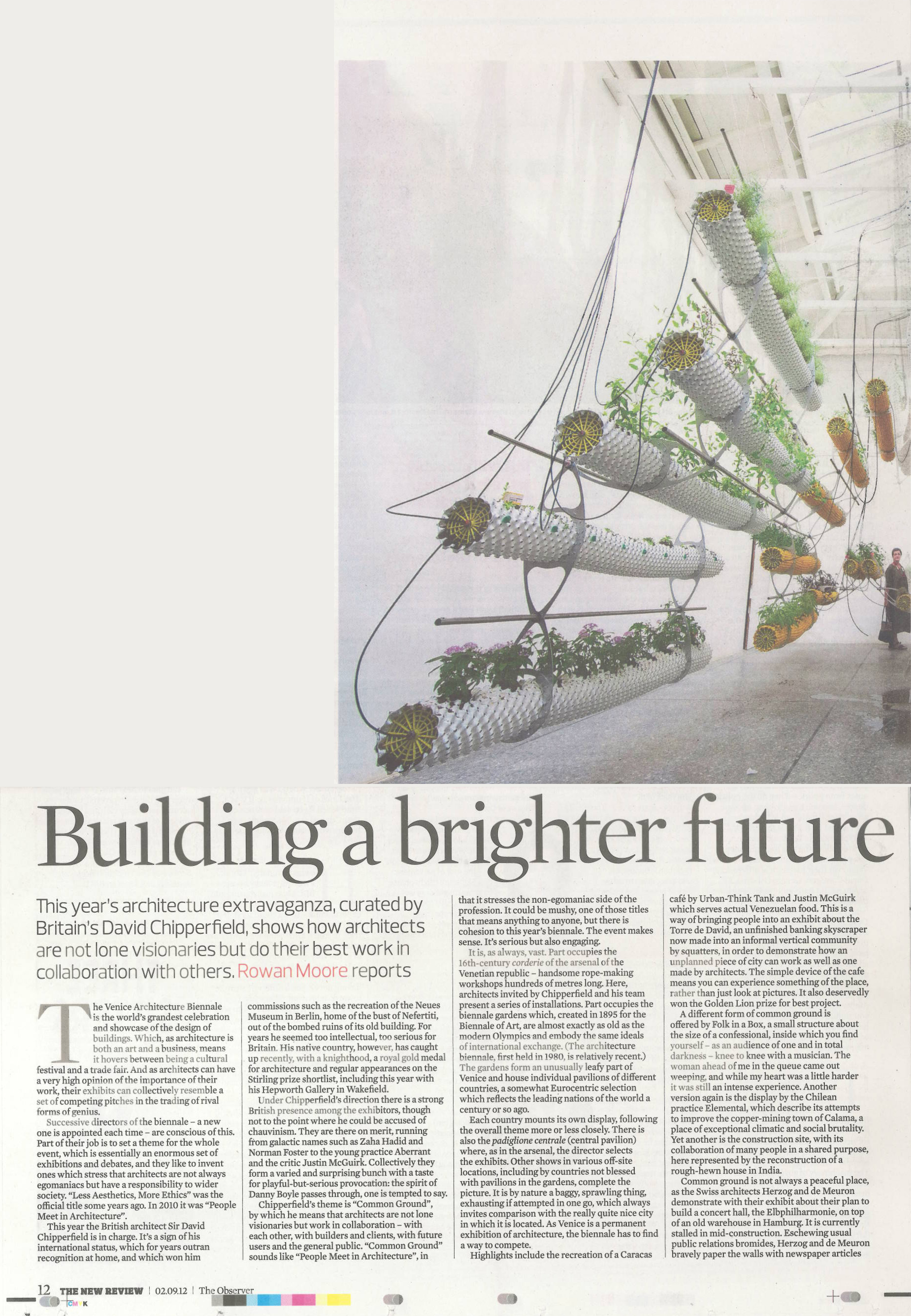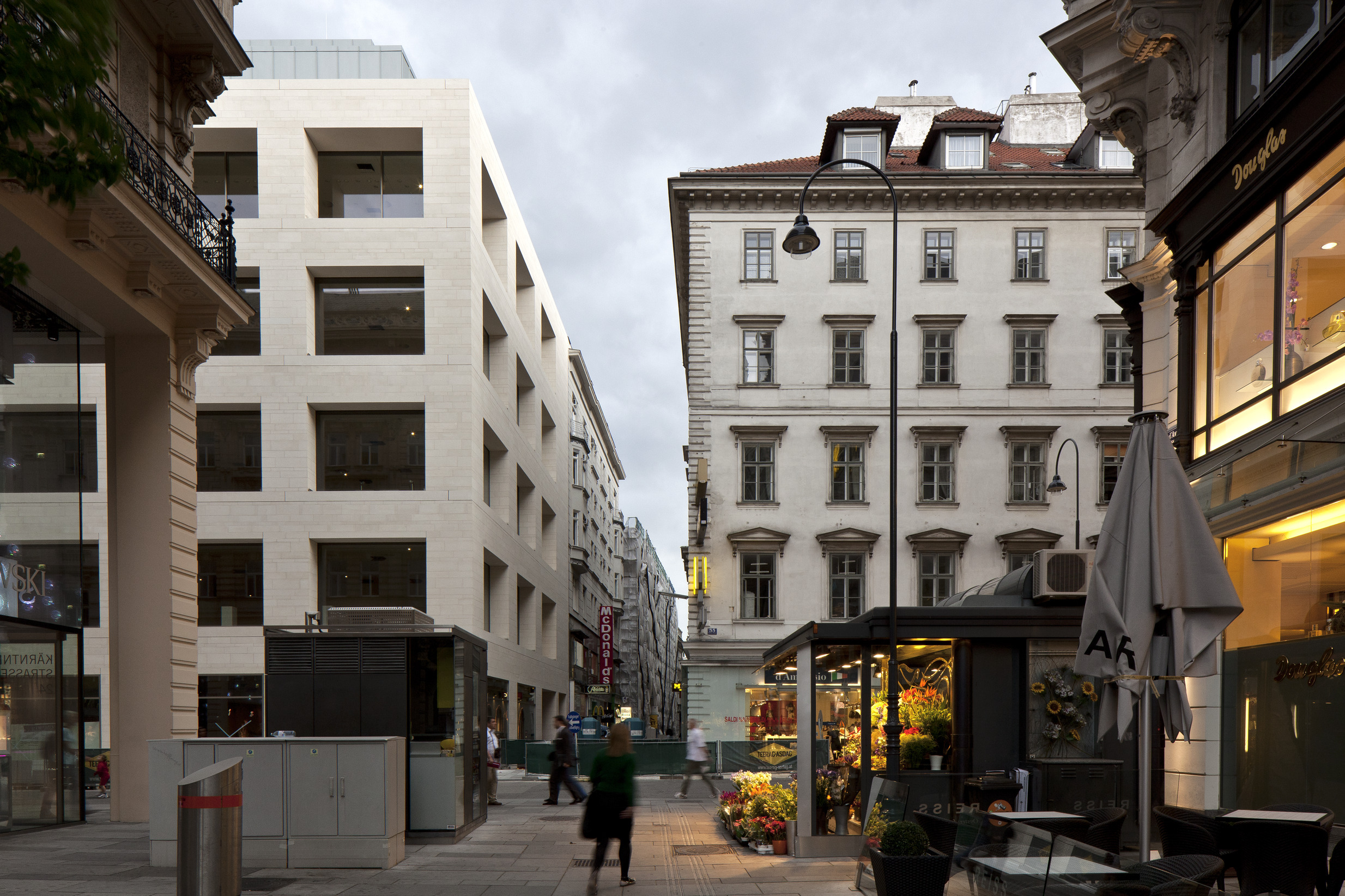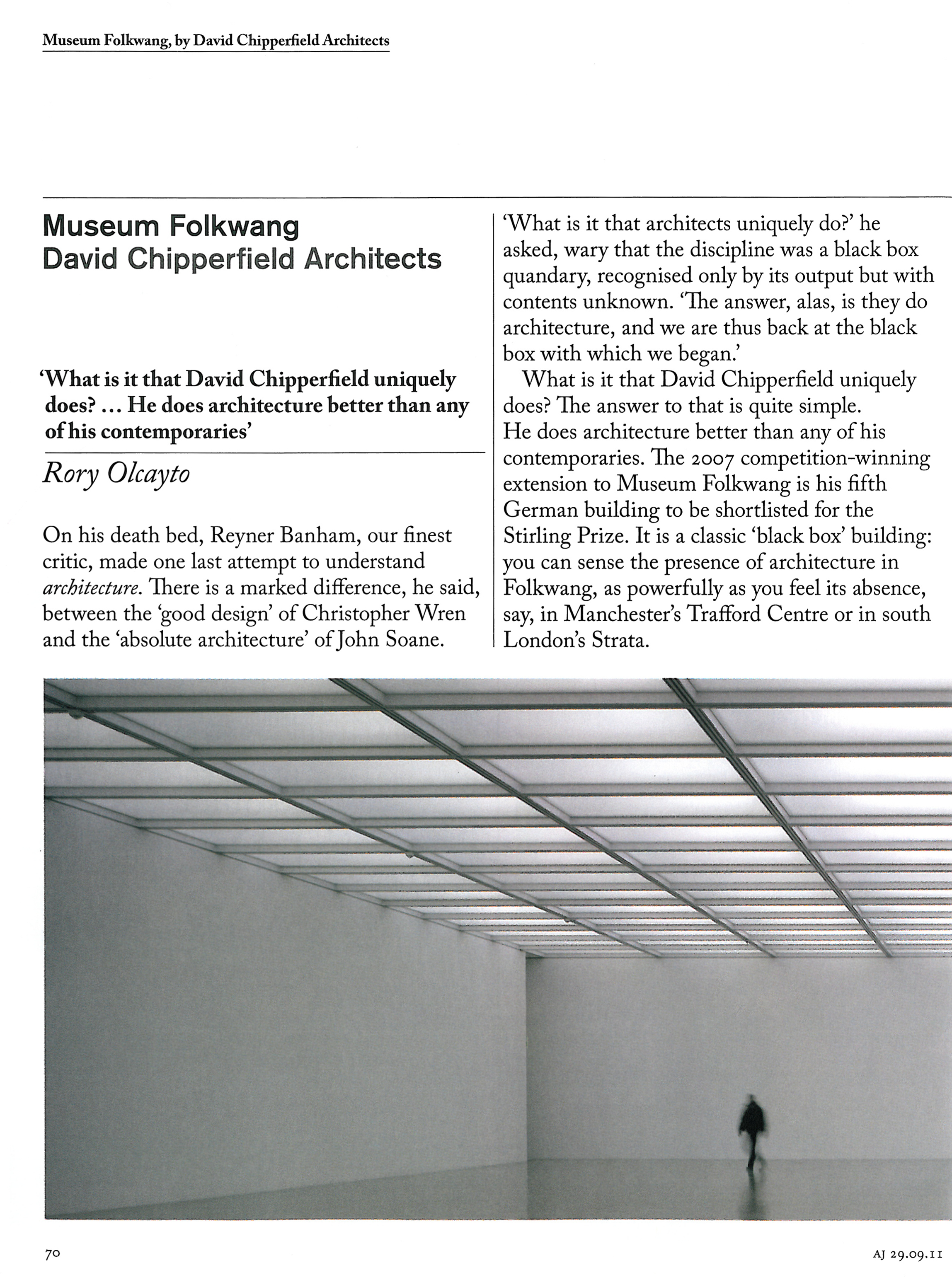âDavid Chipperfield, curator of the 13th Venice Architecture Biennale, which he calls âCommon Groundâ, urges architects to explore, together, their social and professional concerns. 120 architects working on 59 projects will enrich this ambitious theme from 29 August to 25 November (2012)â
David Chipper field, curator of the 13th Venice Architecture Biennale, which he calls âCommon Groundâ, urges architects to explore, together, their social and professional concerns. 120 architects working on 59 projects will enrich this ambitious theme from 29 August to 25 November.
A spectre haunts my conversation with David Chipperfield over his curatorship of the 13th Venice Architecture Biennale: the spectre of economic recession. âAs a profession, we've had 15 good years - productive years, exuberant years - and there's been money for very singular, flamboyant buildingsâ, says David Chipperfield seated at a trestle table in his new, if temporary, office alongside London's Waterloo station with Renzo Piano's nearly completed Shard looming through big windows in the near distance. The room is filled with elegant white models of buildings that, soon enough - and despite the worst economic depression since the 1930s â will grace city centres worldwide.
They include the competition-winning design for the MusÊe des Beaux-arts in Reims with its façade of translucent marble and ceramic glass panels and its three floors of naturally lit galleries displaying works of art from the 15th to the 21st centuries.
David Chipperfield's lucidly sober, coolly refined and fashion-defying designs seem like symbols of how architects and architecture might yet ride out the current financial storm. âWe certainly need to question, more soberly, what - as architects - our collective responsibilities areâ, he says. âArchitecture culture has retained much of its depth, but the profession can rightly be accused of encouraging the 'star system' - with the complicity of the media - and with showing off with designs for theatrical one-off buildings, buildings that have often been like the latest perfume bottle. As architects, we've done a lot of slick museums in recent years, but very little social housing. We've promoted ourselves autobiographically, but we've tended to be remote from common concerns. So, the 2012 Biennale is focused on what I've called 'Common Ground', the common ground, that is, between architects and society as well as between architects themselves. It's time for a wake-up ca II to the profession, and I hope the Venice show might play its part in getting us to think afresh about what we can do to help make society work. We need to share ideas, to pool our talents, to take ourselves seriously and for people to see that architects are not just prima donnas, lone geniuses and media stars but committed professionals with a shared agenda.â
So, Common Ground will not be the story of a particular group of architects or of a specific intellectual, cultural or political movement. âI've asked 120 architects working on 59 different projects to participate in the exhibition at the Corderie in the Arsenaleâ, says Chipperfield. âThe common ground between them is not established on the basis that all things are, or should be, the same; it's more the idea that here's an occasion where different positions can meet on shared territory. I certainly don't want to be didactic, and I won't remotely be trying to say what buildings should look like. I'm just trying to get some oxygen into the discussion of what, as architects, we can and should be doing, whether we're working on new buildings or restorations, and no matter what our particular aesthetic is.â
What will visitors to the Corderie see? Whose work will be on display? What are the themes Chipperfield and his curatorial team will address? âWe'll be looking at the role of public architecture, something that has disappeared increasingly around the world in recent decades. Rem Koolhaas, for example, will be looking at the role and work of the long defunct GLC [Greater London Council] Architect's Department, when civic design was a common ground between citizens, politicians and the profession; the work of the GLC couldn't be less fashionable or more forgotten. A number of young Spanish studios will be showing their built designs for the kind of public buildings - a town hall in Zaragoza, a museum in Madrid, a railway station in Pamplona â that have now dried up. Anupama Kundoo, an Indian architect, is going to build a brick house inside the Corderie during the Biennale with a team of rural Indian workers. Zaha Hadid will be working up a new type of low-cost shell structure that might be used in public buildings of the future. âIt's all coming together thick and fast, but we've only had a very short time to think through the exhibition; I was appointed in January this yearâ he underlines.â David Chipperfield's exhibition will also be probing the relationship between the professional media and the architectural profession. What, in other words, is the âcommon groundâ between what the profession does, or intends to do, and the manner in which this is discussed and presented by the media? Common Ground will be looking at the role specific magazines and journals - notably Casabella, Domus and Architectural Review - have played at various times over the decades in establishing a creative common ground between architects and society through the lens of the media. Editors, critics and their publications have often been under pressure, too, in recent years to encourage the âstar systemâ and to promote âiconic' [i.e. wilful] design, while journalists working in the various national media have been discouraged from addressing more serious issues because, I suppose, novelty and âcelebrityâ are meant to outsell thoughtfulness and everyday concerns. David Chipperfield has had precious little time to develop his theme for Venice and he knows that it is a gamble as to whether or not his theme will win the hearts, eyes and minds of visitors trooping through the long, shadow-dappled galleries of the Corderie this summer and autumn. To date, the most memorable of the thirteen Venice architecture biennales remains the very first, Paolo Portoghesi's The Presence of the Past in 1980. Why? Because the theme responded to a popular chord - the cry for a reconnection between contemporary architecture and history - and also because the exhibition was well orchestrated and visually engaging. David Chipperfield's theme is certainly one that matters in these deeply recessional times. It promises to pull the rug from under international egos, forcing them to look at the common ground below, learning all over again, after the years of âperfume bottleâ architecture, how to design and build for all of us.Â



